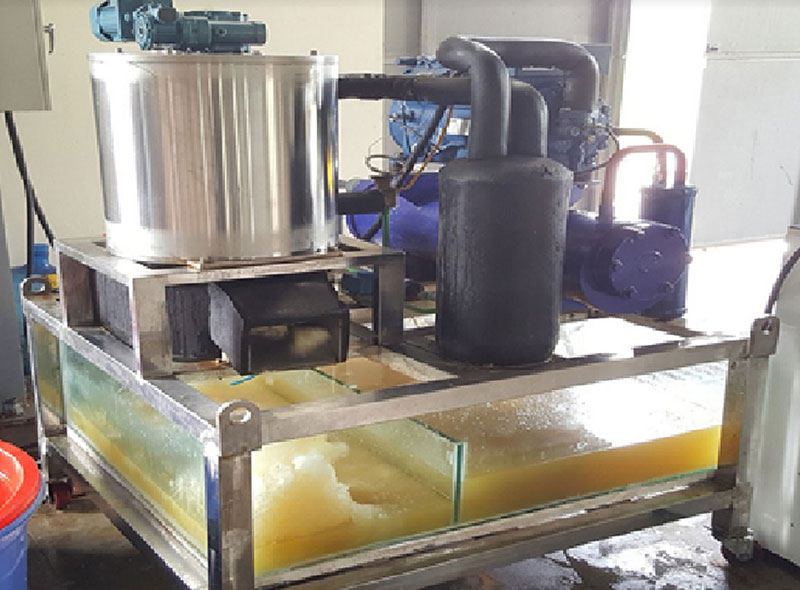
Scientists at the Hi-tech Development Center, an arm of the Vietnam Academy of Science & Technology, in an effort to help fishing boats reduce post-harvesting losses due to the lack of preservation equipment, have invented a machine which can make ice from sea water.
 |
| The icemaker that uses sea water. |
Scientists at the Hi-tech Development Center, an arm of the Vietnam Academy of Science & Technology, in an effort to help fishing boats reduce post-harvesting losses due to the lack of preservation equipment, have invented a machine which can make ice from sea water.
This is the first product researched and built to suit the conditions of fishing boats in Vietnam.
Offshore fishing is an important part of the fishery sector development strategy with an annual production of 6.56 million tons, of which 3.03 million tons come from fishing and 3.53 million tons from farming.
However, while the exploitation output is high, the rate of post-harvesting losses is also high, especially in fishery exploitation.
A report of the General Department of Fisheries under the Ministry of Agriculture and Rural Development (MARD) showed that the post-harvesting loss in Vietnam accounts for 20-30 percent of exploitation output. This means that Vietnam loses 700,000 tons of seafood as it is spoiled, worth VND14 trillion.
The major problem is that fishing boats have small capacity and don’t have sufficient equipment to preserve products.
In general, seafood is preserved with ice made inland and taken on board.
There are problems in making ice from freshwater with traditional methods, including the high temperature of cooling water and slow freezing speed. The ice, after grinding, has sharp edge which may scratch seafood, thus affecting quality.
The problems will be fixed with the icemaker invented by Le Van Luan and his co-workers.
There are many advantages in using ice to preserve seafood. It can help protect the quality of seafood and minimize the amounts of spoiled products.
Meanwhile, making ice from sea water can help reduce production cost, because fishermen don’t have to carry ice from mainland.
The input material water to make ice is 3 percent salt water, or sea water which is pumped into a periodic tank. After that, the water is sprayed evenly over the surface of the icing chamber.
The volume of water to be pumped depends on the density or temperature of the ice products required. The water can be frozen quickly in the icing chamber at a temperature of -3 to -6oC.
The entire icing process of the machine is regulated by the central control system which can adjust the capacity of the machine and the density of ice. The equipment is made of corrosion-resistant materials.
(Source: VNN)





